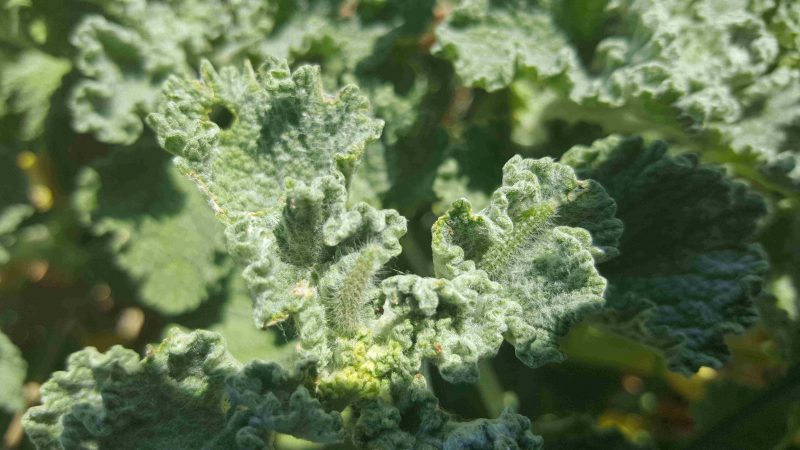Funded by the Sustainable Farming Fund.
The content provided on this page has been supplied by the Horehound Biocontrol Group and Dr Ronny Groenteman (Senior Researcher – Weed Biocontrol, Manaaki Whenua – Landcare Research). Content will be updated as the project progresses.
Horehound (Marrubium vulgare) is a naturalized, perennial, drought tolerant herb which is widespread in low rainfall areas of New Zealand, particularly in the South Island high country. This species is also emerging as an important, and difficult to control, weed in stands of our most important dryland pasture species – Lucerne. There are currently over 150 000 ha of lucerne (alfalfa; Medicago sativa) grown in New Zealand.

The main issues with the invasion and spread of horehound within pasture systems is the species is unpalatable to grazing livestock and can, over time, displace agronomically important pasture components. This reduces the quantity and quality of feed on offer. In cases where animals are forced to eat horehound, meat is tainted. Additionally, seeds can downgrade wool quality of animals which have grazed in paddocks infested with horehound. To date, chemical and mechanical control has had limited success in controlling the spread of horehound. It is currently estimated that the economic impact to farmers is $29-$39M annually.
Previously, in Australia, a successful biocontrol program was established to control horehound with the release of the plume moth (Wheeleria spilodactylus, foliar feeder) and the clearwing moth (Chamaesphecia mysiniformis, root feeder) from 1994. Here, the Horehound Biocontrol Group was established to identify potential biocontrol agents and determine the feasibility of a biocontrol programme in New Zealand.
The Group was successful at securing funding to pursue the introduction of the biocontrol agents that have become successful in Australia. The application to release two species of moths for the biological control of horehound was granted approval by New Zealands Environmental Protection Authority in September 2018. Check out the Blog for a series of posts which describe the journey to approval of the biocontrol agents.
Horehound Biocontrol Group
- Ronny Groenteman, Senior Researcher – Weed Biocontrol, Manaaki Whenua Landcare Research
- Snow Loxton, Sawdon Station, Lake Tekapo
Blog posts
- 24/01/2024. Horehound Biocontrol Update 17 – Secondary introduction/release
- 16/01/2023. Horehound Biocontrol Update 16 – Update on biocontrol agent release
- 01/02/2021. Horehound BioControl Update 15. Post release establishment update.
- 01/02/2021. Horehound BioControl Update 14. Post release establishment.
- 11/02/2020. Horehound BioControl Update 13. Post release update.
- 21/01/2019. Horehound BioControl Update 12. Release day
- 26/11/2018. Horehound BioControl Update 11. Field day and site search.
- 18/19/2018. Horehound BioControl Update 10. EPA application approval.
- 17/08/2018. Horehound BioControl Update 9.
- 31/07/2018. Horehound BioControl Update 8 – Field survey results.
- 17/07/2018. Horehound BioControl Update 7 – Submissions closed.
- 13/06/2018. Horehound BioControl Update 6 – Call for Submissions.
- 04/05/2018. Horehound BioControl Update 5.
- 23/04/2018. Horehound BioControl Update 4.
- 23/02/2018. Horehound biocontrol – a step closer. Update 3.
- 09/01/2018. Horehound Biocontrol Update 2.
- 20/12/2017. Horehound Biocontrol Update 1.

